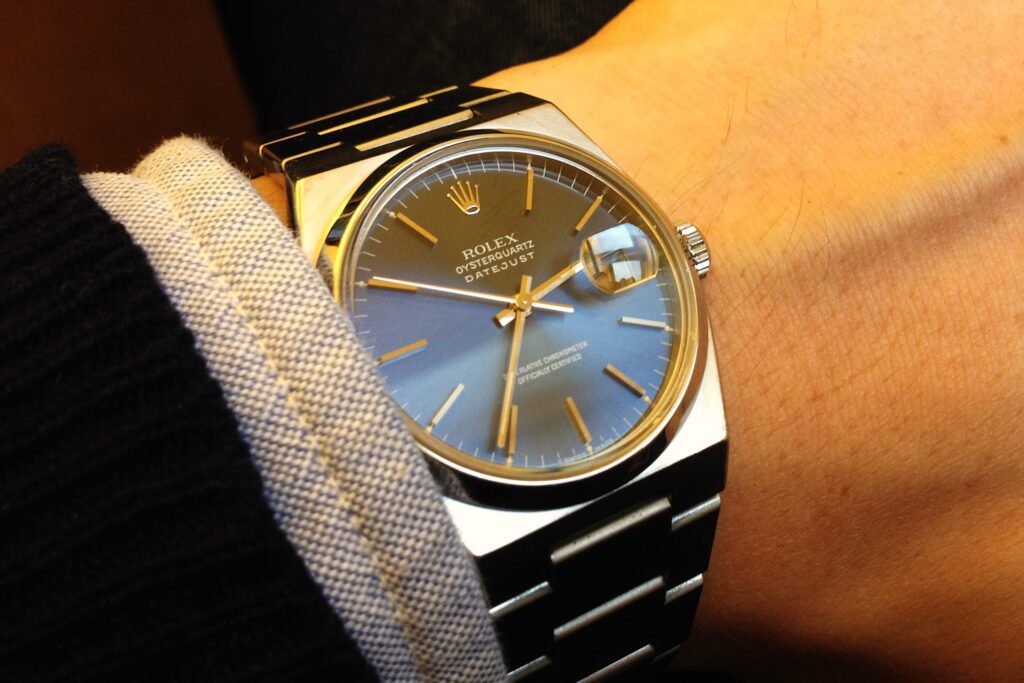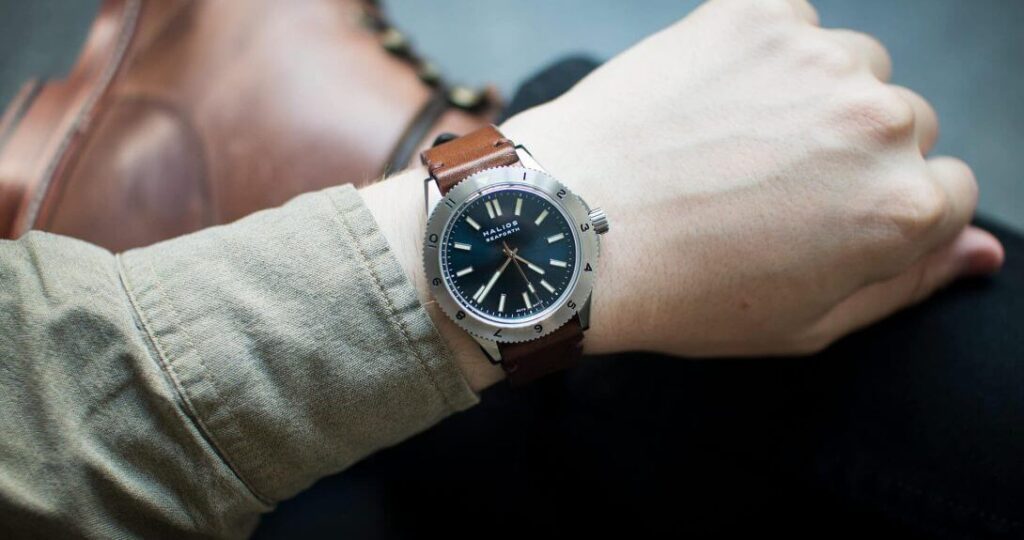Wristwatches and Status

Office culture has always featured some unwritten rules of thumb. One in particular is more of a rule of wrist: don’t wear a watch that’s more expensive than your boss’s. However, the script on that old social faux-pas is changing. In an era rife with digital media and smart-tech, having the nicest and most complicated wristwatch in the office might make you more of an outlier than a nuisance to higher-ups. Indeed, according to a recent write-up in the Wall Street Journal titled “Your Watch Says More About Your Status Than You Think” author Jacob Gallagher explores current trends in what’s considered a horological status symbol in the modern workplace.
For brevity’s sake, Gallagher’s article points to shifts in technology and attitudes on how individuals spend their money in an office setting. The first of six testimonials from a variety of lawyers/businessmen cites a 27-year-old man (Tony Traina) and his penchant for high-end luxury watches. While the highest members of his firm typically sport $399 dollar smartwatches, he sticks to his favorite five-figure wristwatches. Having such a collection tends to go unnoticed in his workplace, according to his experience, unless he has his Rolex on. Other interviews with folks working in more traditional offices point to the nuance of wearing the right watch at the right time—to signal an understanding of hierarchy. Despite this lone example, the majority of the interviewees claimed that once fellow professionals found out how much they were spending on watches, they were judged by those colleagues for a lack of frugality. This reality is translating from representative to client in these settings. When making a deal, one particular gentleman switches his watch to a less expensive one. He claims it represents an air of concern regarding where money is spent, instead of flaunting affluence to his prospective clients.
This WSJ article is a relatively short poll but offers an insight into the way social stratification regarding timekeeping has changed in recent years. It would be interesting to see how gender roles in these settings would be effected/affected by the relative cost and style of a workplace timepiece. After all, women have been controversial to many in these male-dominated industries—and any perceived wealth would add another layer to this social strata. Gender aside, these workplaces are noticing trends toward toning down perceived wealth when dealing with clientele. In a world that has traditionally praised extravagant peacocking in the pecking order, it’s pretty refreshing to know that a favorite piece can be a luxury European design or something more casual. Every watch is fair game for enthusiasts and newbies alike to the horological world, in terms of business, as trends move forward.

On a personal note—here at TimesTicking we tend to favor the more traditional pieces. Mechanical movements require a bit more maintenance but their value comes from technical achievement, based in a rich and colorful history of innovation. Quartz analog and digital watches are highly accurate and have a mass appeal that has brought big names to the wrists of mass consumer audiences. The latest trend in smartwatches is also fascinating—but there’s a camp that sees these devices as a sign that one is more interested in looking up-to-date on trends than the design and style of traditional pieces. In terms of business, it seems the dark horse way to climb the social ladder is to stick with classic time-telling—as long as you don’t flaunt it too hard. With gone-public companies like Apple, Google, and watchmakers the Fossil Group throwing their hats into the smartwatch arena—with mult-million-dollar deals concerning this tech—it’s no surprise that many executives and-the-like are toasting praises to their presence on the market. That said, it seems that many savvy up-and-coming businesspeople are finding a niche in portraying a more classic look. As watch trends change, it may just be a renaissance in luxury watchmaking regarding the businessworld. For now, the average consumer/worker is still looking at quartz for the majority of their wristwatch needs—receiving, perhaps, the proverbial last laugh when it comes to shaping wristwatch trends and demand.
Times Ticking has been in operation for more than 30 years, since 1982. We have performed watch repair for customers both locally and internationally. If it Ticks! We KNOW it! Our team of watch repair technicians have a combined experience in watchmaking of over 120 years.

